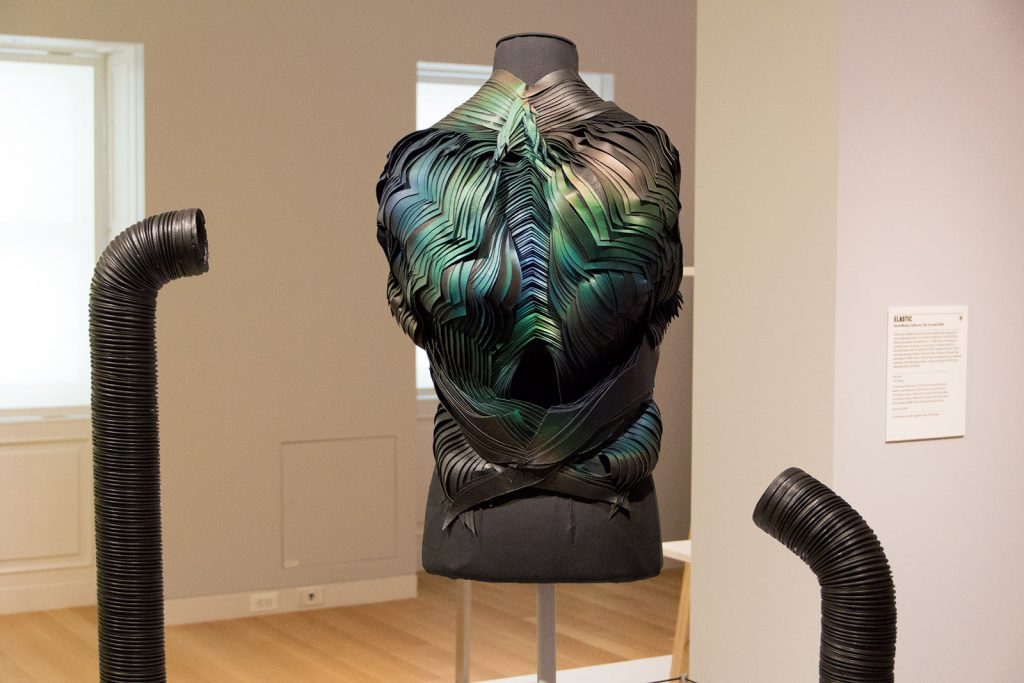Beauty—Cooper Hewitt Design Triennial
Forging unique definitions through innovative design


The work of designers is rooted in shape, form and color—qualities attributed to external appearance—yet many shy away from consciously acknowledging the notion of beauty. Opening today, “Beauty—Cooper Hewitt Design Triennial” (taking over two floors of NYC’s Cooper Hewitt, Smithsonian Design Museum) is brave enough to attempt navigating the concept. Works from 63 international designers in a range of fields—each armed with their unique perspective of what “beauty” is and can be—have been organized into seven themes: extravagant, intricate, ethereal, transgressive, emergent, elemental and transformative. While there are a lot of 3D-printed objects (even slugs) and some sections that feel like a furniture fair, the exhibition does a commendable job of displaying how beauty is being interpreted in continually innovative ways. This is achieved by covering a surprising number of mediums, from avant-garde apparel by Mary Katrantzou and Iris van Herpen to the opening titles and credits for True Detective. Below are our favorite highlights from the show.

Jacket, The Scarab, from AIR Collection (2015)
First and foremost, this is a leather jacket we’d definitely wear out for a night on the town. Designed by Lauren Bowker of London-based studio THEUNSEEN, it’s been coated with color-changing ink that responds to environmental conditions. Cooper Hewitt has set up pumps next to the exhibit that produce heat and wind pressure, so the fabric color transforms from black to shades of green, blue and more before your eyes. More than fashion statement, this type of communicative apparel could be applied in various ways; one that comes to mind is signaling to the wearer first signs of an illness.

PolyThread knitted textile pavilion (2015-2016)
The fields of textiles and architecture meet in this active bending structure, commissioned specially by Cooper Hewitt. Architect Jenny Sabin (of Philadelphia-based Jenny Sabin Studio, who is also an assistant professor at Cornell, among many other roles) created a pavilion that experiments with tension between the aluminum tubing and knitted material—overall resembling something like cells under a microscope. The photo-luminescent and solar-active fibers react to light and, every 15 minutes, the lighting cycles through “day” and “night” settings to show the full range of visual potential. Though it’s the largest work in the “Beauty” exhibition, the structure is lightweight and therefore could be transported easily, which is what Sabin is interested in exploring: fabric-based structures tough enough for the outdoors.

Scale models, Architecture is Everywhere (2015)
Everyday objects become extraordinary when you add tiny humans to the picture. Meticulously stacked staple refills resemble shipping containers or a modular apartment building; a dryer sheet transforms into snow-covered dunes; an overturned ceramic ashtray, in our mind, could double as a contemporary art museum for the miniature figures. Tokyo-based Sou Fujimoto Architects’s “Architecture is Everywhere,” shown at the Chicago Architecture Biennial 2015, is a moodboard of sorts: depicting the concept of “found architecture,” and the initial inspirations and possibilities for large-scale designs. It makes the esoteric field more relatable to the public, and we’ve never looked at pieces of “rubbish” (there was a crushed plastic water bottle) for such a long time.
“Beauty—Cooper Hewitt Design Triennial” opens today and runs through 21 August 2016, then will travel to the San Jose Museum of Art in October.
Images by Nara Shin












